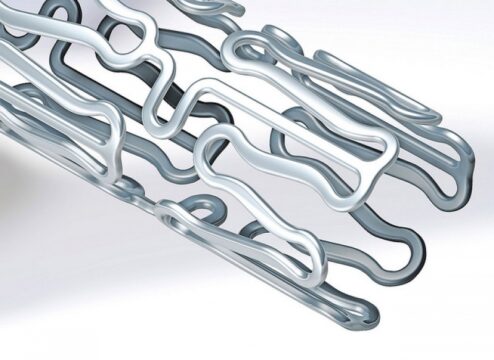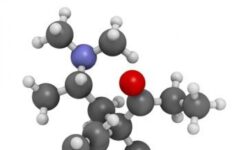Original title: 1-Year Clinical Outcomes of Diabetic Patients Treated With Everolimus-Eluting Bioresorbable Vascular Scaffolds A Pooled Analysis of the ABSORB and the SPIRIT Trials. Reference: Muramatsu T et al. JACC CardiovascInterv. 2014 May;7(5):482-93. This study included ABSORB, ABSORB Extend and SPIRIT patients. A total of 136 diabetic patients and 415 non diabetic receiving everolimus-eluting bioresorbable scaffolds (Absorb) and…
Elevated C-reactive protein levels could predict future events associated to non-culprit lesions. PROSPECT study sub analysis.
Original title: Relation of C-reactive protein levels to instability of untreated vulnerable coronary plaques (from the PROSPECT study). Reference: Kelly CR et al. Am J Cardiol. 2014;Epub ahead of print. The original PROSPECT study included 697 patients with acute coronary syndrome (ACS) undergoing culprit artery percutaneous coronary intervention (PCI) followed by intravascular ultrasound (IVUS) to the rest of…
The radial access is a viable alternative in infarction complicated with cardiogenic shock
Original title: Arterial access site utilization in cardiogenic shock in the United Kingdom: Is radial access feasible? Reference: Mamas A. Mamas, et al. Am Heart J 2014;167:900-08 Cardiogenic shock in the context of acute myocardial infarction is associated with high mortality, and represents approximately 10% of major bleeding complications. Radial Access reduces mortality mainly by reducing bleeding; however,…
Orbital Atherectomy improves calcified lesions treatment outcomes
Original title: Pivotal Trial to Evaluate the Safety and Efficacy of the Orbital Atherectomy System in Treating de Novo, Severely Calcified Coronary Lesions (ORBIT II) Reference: Jeffrey Chambers, et al. JACC Intervention 2014;7:510-8 Severely calcified coronary lesions, traditionally associated to difficult or impossible stent implantation, asymmetric stent expansion, higher post procedural events rate, more restenosis, more lesion revascularization,…
Dedicated two everolimus eluting stent strategies improve bifurcation PCI outcomes
Original title: Dedicated two-stents technique in complex bifurcation percutaneous coronary intervention with use of everolimus-eluting stents: The EES-bifurction study. Reference: Nisharamed I. Kherada, et al. International Journal of Cardiology 2014;174:13-17 Bifurcation PCI, especially 1.1.1 Medina bifurcation lesions PCI, is particularly challenging and has been associated with increased restenosis. The use of drug eluting stents (DES) associated to…
Higher percentage of strut coverage in biodegradable polymer DES vs. durable polymer DES. Strut level OCT analyses
Original title: Randomized comparison of strut coverage between Nobori biolimus-eluting and sirolimus-eluting stents: an optical coherence tomography analysis. Reference: EuroIntervention 2014; 9-online publish-ahead-of-print February 2014 The aim of this study was to compare strut coverage at six months follow up after Nobori biolimus eluting stent (N- BES) implantation versus Cypher Select sirolimus eluting stent (SES) implantation.…
Severe coronary calcification is a predictor of coronary events in acute coronary syndromes
Original title: Ischemic Outcomes After Coronary Intervention of Calcified Vessels in Acute Coronary Syndromes. Pooled Analysis From the HORIZONS and ACUITY Trials. Reference: Philippe Généreux, et al. J Am Coll Cardiol 2014;63:1845-54 Calcification of the arteries has always been a challenge and a generator of problems during coronary angioplasty, but its impact on acute coronary syndromes has not…
Blush reduction in a not responsible vessel is a prognostic marker in those receiving angioplasty in the culprit vessel.
Original title: Impact of Nonculprit Vessel Myocardial Perfusion on Outcomes of Patients Undergoing Percutaneos Coronary OIntervention for Acute Coronary Síndromes. Analysis From ACUITY Trial. Reference: Alexandra Lansky, et al. JAAC Cardiovascular Intervention 2014,7:266-275 In Non ST elevation Acute Coronary Syndrome (NSTE-ACS) is demonstrated that revascularization of the culprit vessel is beneficial, but strategy it is not yet clear…
Higher event rate in those with non-ST elevation ACS who received revascularization at PLATO study. Beyond this, ticagrelor reduced mortality.
Original title: Ticagrelor vs. clopidogrel in patients with non-ST-elevation acute coronary syndrome with or without revascularization: results from the PLATO trial. Reference: Lindholm D et al. Eur Heart J. 2014; Epub ahead of print. The PLATO study randomized 18624 patients with ACS to aspirin and ticagrelor (180 mg loading dose followed by 90 mg every 12 hours) versus…
Angioplasty in sirolimus – eluting stent restenosis is safe and effective beyond the change of drug.
Original title: Sirolimius-eluting versus paclitaxel-eluting stents in diabetic and non-diabetic patients within sirolimus-eluting stents restenosis: Results from the ISAR-DESIRE 2 trial. Reference: Sebastian Kufner, et al. Cardiovascular Revascularization Medicine 2014, 15:69-75. DES restenosis has always generated a challenge and a puzzle when defining the strategy of revascularization by angioplasty: A quite used concept was to switch to…
Infusion of bone marrow mononuclear cells in acute myocardial infarction, meta-analysis of all published to date.
Original title: Intracoronary stem cell infusion after acute myocardial infarction: a meta-analysis and update on clinical trials. Reference: de Jong R, Houtgraaf JH, Samiei S, et al. Circ Cardiovasc Interv. 2014;Epub ahead of print. This meta-analysis included 30 randomized studies conducted between July 2002 and September 2013, totalling 2037 patients with acute myocardial infarction. Of the total, 1218…










